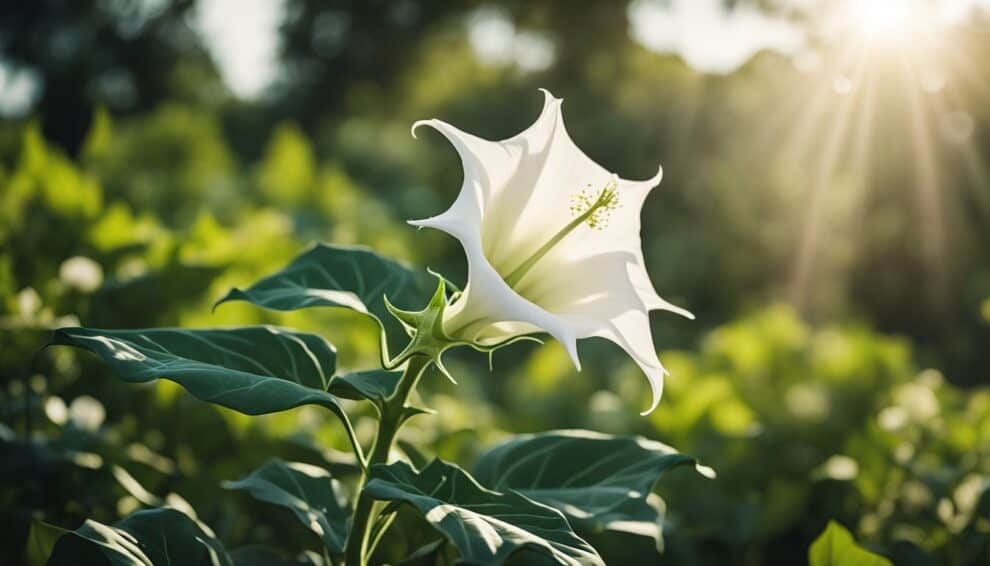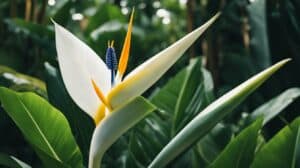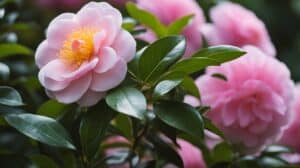Datura Stramonium, also known as Jimsonweed, is a fascinating plant species that has been used for medicinal and spiritual purposes for centuries.
Despite its beauty and intriguing history, Datura Stramonium is a highly toxic plant that requires careful handling and management.
In this article, we will explore some of the fascinating facts and care tips for beginners who are interested in growing and cultivating this unique plant.

One of the most interesting aspects of Datura Stramonium is its historical use in various cultures around the world.
From ancient Indian medicine to Native American spiritual practices, this plant has been revered for its hallucinogenic and medicinal properties.
However, it is important to note that the plant is highly toxic and can cause serious harm if not used properly.
Therefore, it is crucial to understand the proper care and handling of Datura Stramonium before attempting to grow it.
For those who are interested in growing Datura Stramonium, there are several important factors to consider, including soil type, watering, and sunlight requirements.
With the right care and attention, this plant can thrive and provide a unique addition to any garden or indoor space.
Whether you are a seasoned gardener or a beginner, this article will provide valuable insights into the world of Datura Stramonium care.
Understanding Datura Stramonium

Historical Significance
Datura Stramonium, also known as Jimsonweed or Devil’s Snare, has a long history of use in traditional medicine and spiritual practices.
Native to North America, this plant was used by Native American tribes for its hallucinogenic properties in religious ceremonies.
It was also used as a pain reliever and to treat respiratory ailments.
In the 17th century, European settlers brought Datura Stramonium to Europe, where it gained popularity as a recreational drug.
However, its toxic effects were soon discovered, and it was no longer used for this purpose.
Species Overview
Datura Stramonium is a member of the nightshade family and is a highly toxic plant.
It can grow up to 5 feet tall and produces large, trumpet-shaped flowers that are white or purple.
The plant also produces spiny seed pods that are about the size of a walnut.
While Datura Stramonium is known for its hallucinogenic properties, it is important to note that the plant is highly toxic and can cause serious health problems if ingested.
The plant contains several alkaloids, including atropine, scopolamine, and hyoscyamine, which can cause hallucinations, delirium, and even death.
In terms of care, Datura Stramonium prefers full sun and well-draining soil.
It is a hardy plant that can tolerate drought conditions, but it is important to keep the soil moist during periods of prolonged dryness.
It is also important to wear gloves when handling the plant, as the spines on the seed pods can cause skin irritation.
Cultivation Tips

Ideal Growing Conditions
Datura Stramonium is a hardy plant that can grow in various conditions. However, it thrives best in a sunny location with well-draining soil.
It can tolerate a wide range of soil pH, but prefers a slightly acidic to neutral soil.
The ideal temperature range for this plant is between 60-85°F (15-29°C).
Propagation Methods
There are two common ways to propagate Datura Stramonium: by seed or by cuttings.
Seeds should be sown in the spring, after the last frost, in a well-draining soil mix.
Keep the soil moist until the seeds germinate, which can take up to two weeks. Cuttings can be taken from mature plants in the summer.
Dip the cuttings in rooting hormone and plant them in a well-draining soil mix. Keep the soil moist and in a warm location until roots develop.
Common Pests and Diseases
Datura Stramonium is generally a hardy plant with few pest or disease problems. However, it can be susceptible to spider mites and aphids.
These pests can be controlled with insecticidal soap or neem oil. Root rot can be an issue if the soil is too wet or poorly draining.
To prevent root rot, ensure that the soil is well-draining and allow the soil to dry out slightly between waterings.
Safety and Handling

Toxicity Awareness
Datura Stramonium is a highly toxic plant that contains alkaloids such as scopolamine, hyoscyamine, and atropine.
These alkaloids can cause hallucinations, delirium, and even death if ingested in large amounts.
It is important to be aware of the potential dangers of handling this plant and to take appropriate precautions.
Safe Handling Practices
When handling Datura Stramonium, it is important to wear gloves and protective clothing to avoid direct contact with the plant.
If you need to prune or harvest the plant, use sharp tools to avoid damaging the plant and releasing its toxic sap.
If you have children or pets, it is important to keep them away from the plant as accidental ingestion can be fatal.
It is also important to wash your hands thoroughly after handling the plant to avoid accidental ingestion or contact with your eyes.
In case of accidental ingestion, seek medical attention immediately.
Symptoms of Datura Stramonium poisoning include dilated pupils, dry mouth, confusion, hallucinations, and seizures.
By following these safety and handling practices, you can enjoy the beauty of Datura Stramonium without putting yourself or others in danger.
Frequently Asked Questions

How should I get started with growing Datura stramonium?
Datura stramonium is a hardy plant that can grow in a variety of conditions.
However, it is recommended that you grow it in a sunny location with well-draining soil.
The best time to plant Datura seeds is in the spring, after the last frost.
To get started, plant the seeds about 1/4 inch deep in the soil and keep the soil moist until the seeds germinate.
What are some must-know intriguing facts about Datura plants?
Datura plants are known for their distinctive trumpet-shaped flowers that bloom at night.
They are also known for their hallucinogenic properties and have been used in traditional medicine and religious ceremonies for centuries.
In addition, Datura plants are toxic and can be dangerous if ingested.
Can you describe the unique characteristics of Datura stramonium?
Datura stramonium is a tall, bushy plant that can grow up to 5 feet tall.
It has large, green leaves and produces white or purple trumpet-shaped flowers that bloom at night.
The plant also produces a spiky seed pod that is covered in thorns.
Is it safe to handle Datura plants, or are they toxic upon contact?
Datura plants are toxic and should be handled with care.
The leaves, flowers, and seeds of the plant contain tropane alkaloids, which can cause hallucinations, delirium, and even death if ingested.
It is recommended that you wear gloves when handling Datura plants and avoid touching your face or mouth after handling them.
What are the traditional uses of Datura in various cultures?
Datura has been used in traditional medicine and religious ceremonies for centuries.
In some cultures, it is used as a painkiller, sedative, or to induce hallucinations.
In others, it is used in rituals to communicate with spirits or to induce visions.
How do I identify and manage a Datura seed pod?
Datura seed pods are spiky and covered in thorns. They are green when they first appear and turn brown as they mature.
To manage a Datura seed pod, it is recommended that you wear gloves and use pruning shears to cut it off the plant.
Be sure to dispose of the seed pod carefully, as it is toxic.














